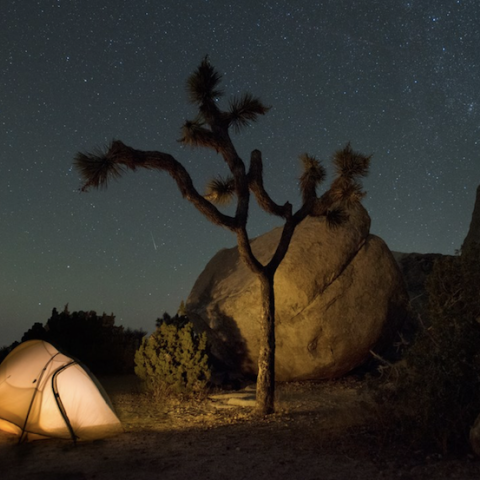
Joshua Tree National Park officials will be discussing new climbing regulations during a virtual meeting Tuesday/NPS file
A virtual meeting will be held Tuesday to discuss a new climbing management plan for Joshua Tree National Park in California. The public meeting will be held via Zoom on April 20 from 6 p.m.–8 p.m.
You can find the link to the Zoom meeting here. Park managers invite climbers and the general public to attend to learn more about the management plan and share feedback.
"We look forward to engaging the public about the development of Joshua Tree's climbing management plan. Issues around rock-based recreation have been developing over the years and the park needs to address these issues to ensure park resources are conserved for future generations," said Joshua Tree Superintendent David Smith.
The purpose of the Climbing Management Plan is to guide the management of rock climbing and related activities for the protection of cultural resources, natural resources, and wilderness character, and to support the public’s desire to enjoy the park through climbing and related activities.
In particular, the plan will address impact issues associated with access routes to climbing areas, climbing routes, and the use of fixed anchors, consistent with laws, regulations, policy, and guidance.
Specific topics to be addressed include:
- There are climbs on many rock formations in the park, some of which may have Native American artifacts or rock art or are important spiritual sites to Native American communities. How could the park best address Native American concerns? How could the park best address cultural resources and tribal values that may be impacted by recreational use? (e.g. pictographs, petroglyphs, formations of spiritual value and importance).
- Right now, most climbs can't be reached from official trails, and a lot of unofficial trails have appeared over time (created by both climbers and other users). What do you think about building official trails to certain climbing areas and then requiring people to stay on those trails, so that vegetation and wildlife can come back into these trampled areas?
- Rock climbers use different tools to ensure their safety while climbing. One of the more common tools is a bolt which is drilled into the rock with a metal hanger that allows a climber to anchor a rope to the rock. There are thousands of these bolts throughout the park - many of which are in wilderness. Does the placement of these bolts affect your enjoyment of the park?
- Bolts are common on climbs at Joshua Tree, both in and out of wilderness, and many climbs would be almost impossible without them. But NPS policy says bolts in wilderness should be rare, and that bolt-intensive climbs, including sport climbs, are inappropriate in wilderness. What kinds of climbs do you think NPS should have in wilderness given this policy? Are there types of climbs that are acceptable outside wilderness but not in wilderness?
- Replacement of aging bolts and fixed anchors must consider how the climb is accessed from a parking lot, if the route is in wilderness, and if the route meets the expectation of a quality Joshua Tree National Park climb. How could the park determine if a route meets National Park Service and climbing community standards? Who should determine if and when a bolt needs to be replaced? What role should the First Ascentionist have?
- NPS policy also requires that NPS issues a permit before a new bolt is placed or replaced. What should NPS consider when deciding whether to issue a permit or not?
You can leave comments concerning the proposal at this page.



 Support Essential Coverage of Essential Places
Support Essential Coverage of Essential Places







Add comment